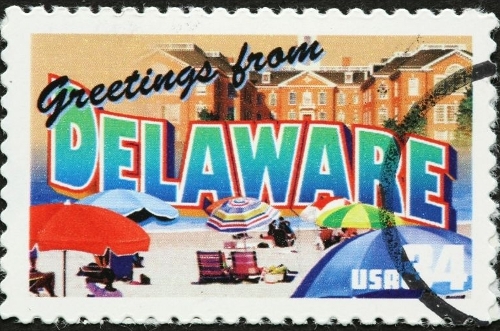
October 22, 2020
Delaware’s beach economy is reeling from the impact of government-imposed lockdowns to flatten the curve of new infections and hospitalizations from
COVID-19. The Rehoboth/Dewey Chamber of Commerce estimated in July, resort area hotel revenue was down 35% to 50%, and restaurants were down 75%. Just 76 respondents of the 1,200 members surveyed by the Chamber estimated a revenue loss of over $200 million.
At $3 billion a year, beach tourism is Delaware’s largest industry. Research suggests beach tourism could see that kind of economic loss permanently if giant wind turbines are built too close to shore.
- A study was conducted by Lutzeyer et al. (2017) at North Carolina State University, “The Amenity Costs of Offshore Wind Farms: Evidence from a Choice Experiment.” The study worked with beach home rental companies and surveyed only people who had recently rented a house on or near the beach. The study found 38% of beach renters would likely not come back to a beach with daytime visible turbines regardless of the distance. Also, others would return only with a rental discount depending on the distance. The study also showed nighttime visualizations of red flashing navigation and aircraft warning lights. Respondents stated even higher objection rates, with 55% not likely to return to a beach with nighttime visible turbines. There are mitigation strategies for the aircraft warning lights, but not the navigation lights.
- A second study from the University of Delaware by Parsons and Firestone suggests there may be a permanent trip loss of 14% after adjusting for the nearly 50% taller turbines planned off our coast then used in the study. The taller turbines have the equivalent impact of moving the turbines 5 miles closer, or about 10 miles from shore. Also, almost a third of the survey participants merely visited the beach area, not the beach itself, thus diluting the results. This study suggests there will be an offset of people coming to the beach to see the turbines, but those curiosity trips tend to be one-time trips. The study also showed nighttime visualizations, but the results were not reported, and stated property values would fall, but didn’t estimate by how much.
In early June, the Skipjack wind project developer, Ørsted, testified at the Maryland Public Service Commission (PSC) that they are negotiating with state governments in Maryland and New Jersey to build additional turbines in their federally provided lease area. (The lease area could hold up to 200 turbines in an area extending from Rehoboth Beach to Fenwick Island, coming as close as 12 miles from shore near Rehoboth.)
The Skipjack project is only twelve turbines with a planned location about 19 miles directly opposite the Indian River Inlet. In PSC testimony, Ocean City, Maryland officials stated the turbines must be 33 miles from shore, outside the current lease area, not to impact tourism. Those officials have refused a permit to bring the power ashore to existing power substations until the project has moved further offshore. Ørsted has refused to consider a different lease area. This Maryland approved project sits in federal waters, is subsidized by Maryland electric customers, and any economic development benefits accrue to Maryland.
All Delaware gets is the risk of lost tourism, and the state’s only leverage is to deny allowing the power ashore here. Unfortunately, the Delaware State Parks Division has been negotiating to bring power ashore by granting a utility right of way in a state park. The original plan would have used Fenwick Island State Park, but an intense public outcry and potential wetland disturbance ended that option. A CRI survey showed that 84% of respondents objected to using the state park and having visible turbines off the coast. The most likely new path would drill under the Delaware Seashore State Park bathhouse, parking lot, and Route 1 to existing power lines that lead to the existing Cedar Neck substation to the south. No decision on the exact location is expected until after the November election.
Beach lovers, businesses, and local officials need to loudly oppose bringing power ashore in our state parks to protect our valuable and beautiful beach view.